100 Years of IBM in Pictures From clocks to supercomputers, IBM has a rich history of technological developments. Here’s a look back at its most notable innovations.
IBM DEY RECORDER (1880)
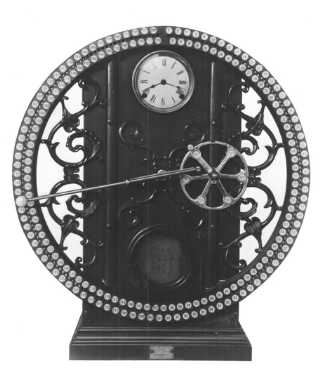
IBM 2 (1923)
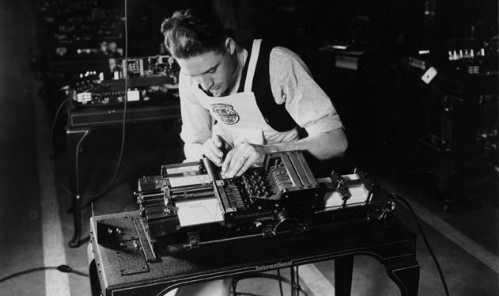
The punch-card technology shown here helped tackle large-scale projects like the U.S. Census. For decades, punch cards were the primary method of data entry and storage; with a huge data-driven project like the census, the system was vital.
IBM 4 (1956)
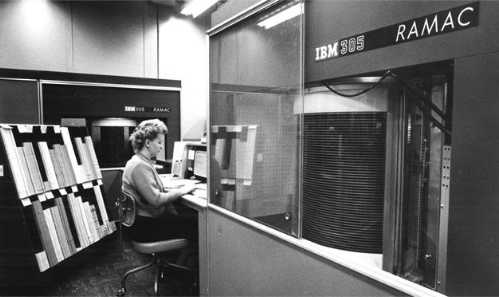
IBM’s RAMAC (Random Access Method of Accounting and Control), an early computer designed for accounting, was introduced in 1956. The whole system was about the size of two side-by-side refrigerators and weighed about 10 tons. It contained the world’s first magnetic hard disk drive, capable of storing 10 megabits of information.
IBM SELECTRIC TYPEWRITER (1961)
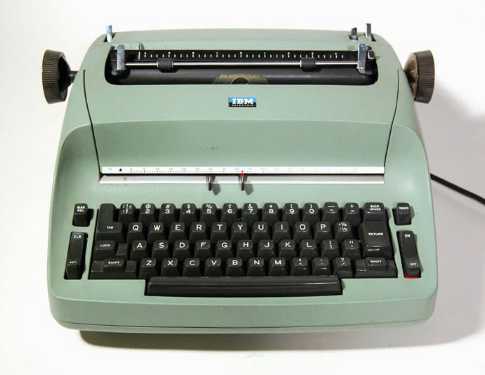
The Selectric was a very successful line of electric typewriters introduced by IBM in 1961. Instead of type bars, it featured a type ball that rotated and pivoted before hitting the paper, moving from left to right across the page. Some later models also included magnetic tape storage
IBM 6 (1965)
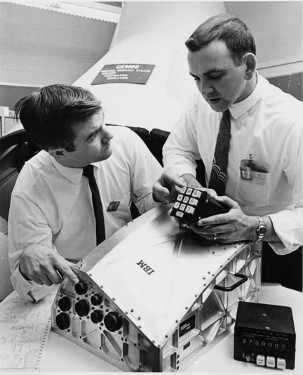
The Gemini space flights had 59-pound IBM guidance computers on board.
IBM LASER 1968 (1968)
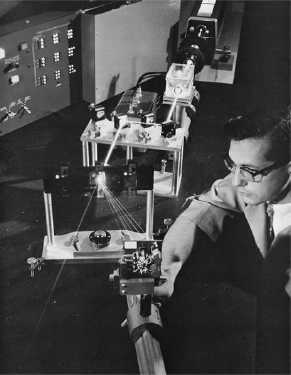
In 1968 researchers at IBM invented an experimental memory system using laser optics. This project was an early predecessor to devices like CDs and DVDs, which use small laser beams to store large chunks of information.
IBM 7 (1973)
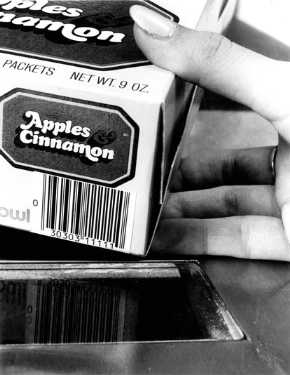
A new type of grocery-store checkout system that scanned bar codes and displayed information about the product was introduced in 1973. The bar code, based on a 1952 IBM patent, is now an industry standard.
IBM PORTABLE COMPUTER (1975)
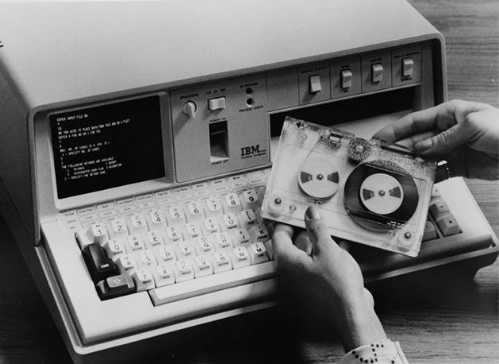
IBM introduced the 5100 Portable Computer in September 1975. The machine weighed around 50 pounds and was a little larger than a typewriter. Though it may appear clunky compared with today’s computers, the 5100 was significantly smaller than the era’s other computers with similar capabilities; it could use both the APL and BASIC programming languages and could be equipped with up to 64 kilobytes of memory. Fully loaded, the 5100 cost around $20,000.
IBM 8 (1981)
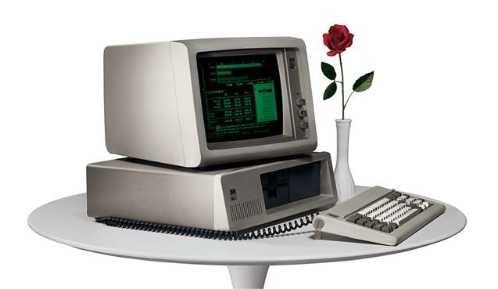
The IBM Personal Computer, introduced in 1981, helped bring computing to people other than scientists, accountants, and hobbyists. It was one of the most successful early PCs.
IBM 10 (1997)
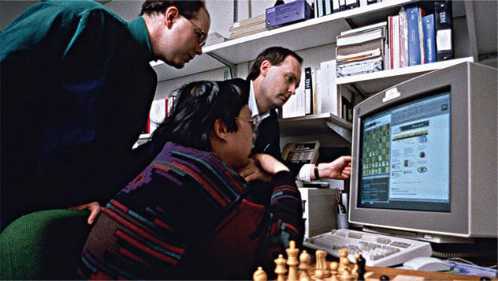
IBM’s Deep Blue proved that chess isn’t only for humans; the supercomputer defeated world chess champion Garry Kasparov in a widely publicized tournament. Through massively parallel processing of chess-specific functions, Deep Blue could calculate between 100 billion and 200 billion chess moves in three minutes.
IBM 11 (2011)
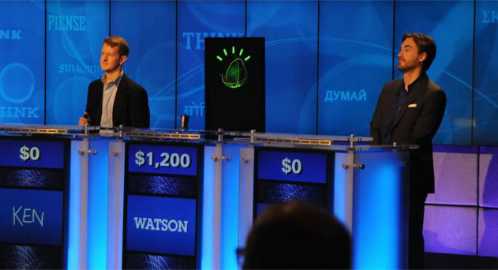
Continuing with the tradition of outsmarting humans, IBM’s Watson defeated Jeopardy! champions Ken Jennings and Brad Rutter on the game show to win $1 million for charity. Jennings jokingly welcomed “our new computer overlords.” IBM hopes to use the Watson technology to further the field of artificial intelligence.
IBM DEY RECORDER (1880)

IBM 2 (1923)

The punch-card technology shown here helped tackle large-scale projects like the U.S. Census. For decades, punch cards were the primary method of data entry and storage; with a huge data-driven project like the census, the system was vital.
IBM 4 (1956)

IBM’s RAMAC (Random Access Method of Accounting and Control), an early computer designed for accounting, was introduced in 1956. The whole system was about the size of two side-by-side refrigerators and weighed about 10 tons. It contained the world’s first magnetic hard disk drive, capable of storing 10 megabits of information.
IBM SELECTRIC TYPEWRITER (1961)

The Selectric was a very successful line of electric typewriters introduced by IBM in 1961. Instead of type bars, it featured a type ball that rotated and pivoted before hitting the paper, moving from left to right across the page. Some later models also included magnetic tape storage
IBM 6 (1965)

The Gemini space flights had 59-pound IBM guidance computers on board.
IBM LASER 1968 (1968)

In 1968 researchers at IBM invented an experimental memory system using laser optics. This project was an early predecessor to devices like CDs and DVDs, which use small laser beams to store large chunks of information.
IBM 7 (1973)

A new type of grocery-store checkout system that scanned bar codes and displayed information about the product was introduced in 1973. The bar code, based on a 1952 IBM patent, is now an industry standard.
IBM PORTABLE COMPUTER (1975)

IBM introduced the 5100 Portable Computer in September 1975. The machine weighed around 50 pounds and was a little larger than a typewriter. Though it may appear clunky compared with today’s computers, the 5100 was significantly smaller than the era’s other computers with similar capabilities; it could use both the APL and BASIC programming languages and could be equipped with up to 64 kilobytes of memory. Fully loaded, the 5100 cost around $20,000.
IBM 8 (1981)

The IBM Personal Computer, introduced in 1981, helped bring computing to people other than scientists, accountants, and hobbyists. It was one of the most successful early PCs.
IBM 10 (1997)

IBM’s Deep Blue proved that chess isn’t only for humans; the supercomputer defeated world chess champion Garry Kasparov in a widely publicized tournament. Through massively parallel processing of chess-specific functions, Deep Blue could calculate between 100 billion and 200 billion chess moves in three minutes.
IBM 11 (2011)

Continuing with the tradition of outsmarting humans, IBM’s Watson defeated Jeopardy! champions Ken Jennings and Brad Rutter on the game show to win $1 million for charity. Jennings jokingly welcomed “our new computer overlords.” IBM hopes to use the Watson technology to further the field of artificial intelligence.
Post Title
→100 Years of IBM
Post URL
→http://amusedbyart.blogspot.com/2011/08/100-years-of-ibm.html
Visit The Art Muse for Daily Updated Collection








